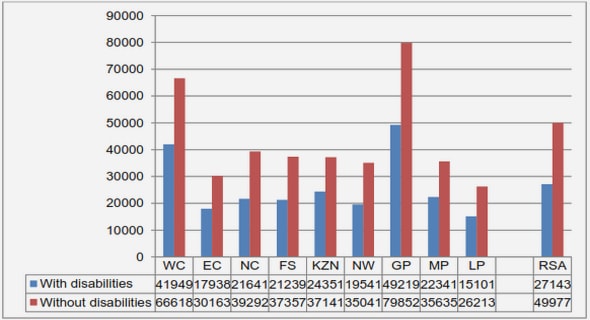(Downloads - 0)
For more info about our services contact : help@bestpfe.com
Table of contents
1 General Introduction
1.1 Objectives and Motivation
1.2 Overview of the popular electromagnetic methods Nomenclature
I Electromagnetic Numerical Tools for the diffraction of light by periodic structures
2 Electromagnetism applied to 1D diffraction gratings
2.1 The basics of diffraction gratings
2.2 Maxwell’s equations formalism: Transient regime
2.3 Maxwell’s equations in the harmonics regime
2.4 The decomposition into TE and TM polarization
2.4.1 Introduction
2.4.2 Polarization of the field exciting the diffraction grating
2.5 Fourier expansion of the field
2.5.1 The general form of the field outside the modulated zone in TE polarization
2.5.2 TM polarization
3 Principles of the Differential Method associated with Fast Fourier Factorization
3.1 The differential Theory in TM polarization
3.1.1 The classical Differential method: the transient equations of the electric and the magnetic fields inside the modulated zone
3.1.2 The harmonic Fields equations inside the modulated zone
3.1.3 Harmonic propagation equations
3.1.4 FFF associated to the differential theory in TM polarization
3.1.5 Fields outside the modulated zone
3.2 Formulation of the differential theory in TE polarization
3.2.1 Fields inside the modulated zone
3.2.2 Field outside the modulated zone
3.3 Numerical integration of the matrix differential system
3.3.1 The Runge-Kutta integration algorithm
3.3.2 Runge-Kutta algorithm applied to the Differential theory in Fourier space
3.4 The linear relation that links the modulated region with the homogeneous zones
3.5 Use of the Shooting Method
3.5.1 Defining the initial conditions
3.5.2 The transition from the stationary fields into the forward and backward representation of the fields
3.5.3 T-matrix of a given section
3.6 Scattering Matrix algorithm (S-Matrix)
3.6.1 Introduction
3.6.2 Definition of the S-Matrix
3.6.3 The total S-matrix of the entire structure
3.7 The intensities of the diffracted order
3.8 RCWA extracted from the differential theory
3.9 Conclusion
4 DM-FFF: Validation and comparison with other electromagnetic computational methods
4.1 Validation of the methods
4.1.1 Introduction
4.1.2 Numerical validation
4.2 The DM-FFF compared to other electromagnetic computational methods
4.2.1 Introduction
4.2.2 Sinusoidal Metallic Grating
4.2.3 Discontinuous structure: A Trapezoidal metallic grating as an example 68
4.3 Conclusion
5 The differential theory and the lossless permitivitty metals: Problem and solution
5.1 Definition of the problem
5.2 Implementation of Graded Index Layer (GIL) at the metal-dielectric interface with pure negative and real permitivitty metallic gratings
5.3 Application of the GIL on a triangular metallic grating with quasi-real negative permitivitty
5.4 Conclusion
6 DM-FFF applied to visual security structures: A full study
6.1 Introduction
6.2 Spectrum to color transformation
6.3 All dielectric structures as a reflection visual security device
6.3.1 Geometry of the structure
6.3.2 The impact of the buffer layer on the chromatic response of the structure
6.3.3 Impact of the period on the chromatic response of the structure
6.3.4 Impact of varying the amplitude of the grating A
6.3.5 Impact of the incident angle θinc
6.4 Use of the DM-FFF for the inverse tailoring of structural color
6.5 Conclusion
II Electromagnetic Numerical Tools for the propagation of light in guided structures
7 DM-FFF applied to optical guided structures: Theoretical interpretation
7.1 Introduction
7.2 Modelisation of integrated optics structures using the DM-FFF
7.2.1 Illustration of the problem
7.2.2 Perfectly Matched Layer as non-linear complex coordinate transformation
7.3 Formulation of the aperidic DM-FFF (a-DM-FFF)
7.3.1 Propagation equation in TM polarization
7.3.2 Propagation equation in TE polarization
7.3.3 Input/Output Ψ as an equivalent guided zone
7.3.4 The use of a transition matrix that directly links the amplitude of the eigen modes with the stationary harmonic vectors
7.4 Validation of the method
7.4.1 TE polarization
7.4.2 TM polarization
7.5 Conclusion
8 A-DM-FFF compared to the a-FMM: Application on complex shaped photonic guided structures
8.1 Application of the a-DM-FFF on curvilinear guided reflector
8.1.1 Geometry of the structure
8.1.2 TM polarization: Dielectric high contrast index structure
8.1.3 TM polarization: Metallic 2D pillar
8.1.4 TE polarization
8.1.5 Conclusion
8.2 Application of the a-DM-FFF on resonant cavities: Microdisk resonators as examples
8.2.1 Introduction
8.2.2 Problem of doublet resonances
8.2.3 Microdisk cavities excited by plane waves
8.2.4 Microdisk-guide coupling
8.3 Conclusion
III Experimental results of Bragg grating filters
9 Fabrication and Characterization of Bragg Reflection filters associated with ion-exchanged waveguides
9.1 Priciples of Bragg grating waveguide used as wavelength filter
9.2 Ion Exchanged waveguides principle
9.2.1 Principle of ion exchange
9.2.2 Description and Fabrication of optical waveguides
9.2.3 Characterization of the guides
9.3 Roll to roll Grating with ion exchanged waveguide: direct interaction
9.4 Roll to roll Grating with ion exchanged waveguide: Hybridization by MEMO
9.4.1 Hybridization process
9.4.2 Simulated results
9.4.3 Spectral analysis
9.5 Conclusion
10 Conclusion and Perspectives
10.1 Conclusion
10.2 Perspectives
References
Appendix A The multiplication of two Fourier series: Toeplitz matrix formulation
Appendix B The normal of the surface for the different used geometries
B.1 Rectangular Profile
B.2 Sinusoidal Profile
B.3 Trapezoidal or triangular Profile
B.4 Curvilinear profile
Appendix C Test ECH mask datasheet
Appendix D List of Publications
D.1 Journal Publications
D.2 Oral contributions in international conferences
D.3 Oral Contributions in French National conferences
Résumé



